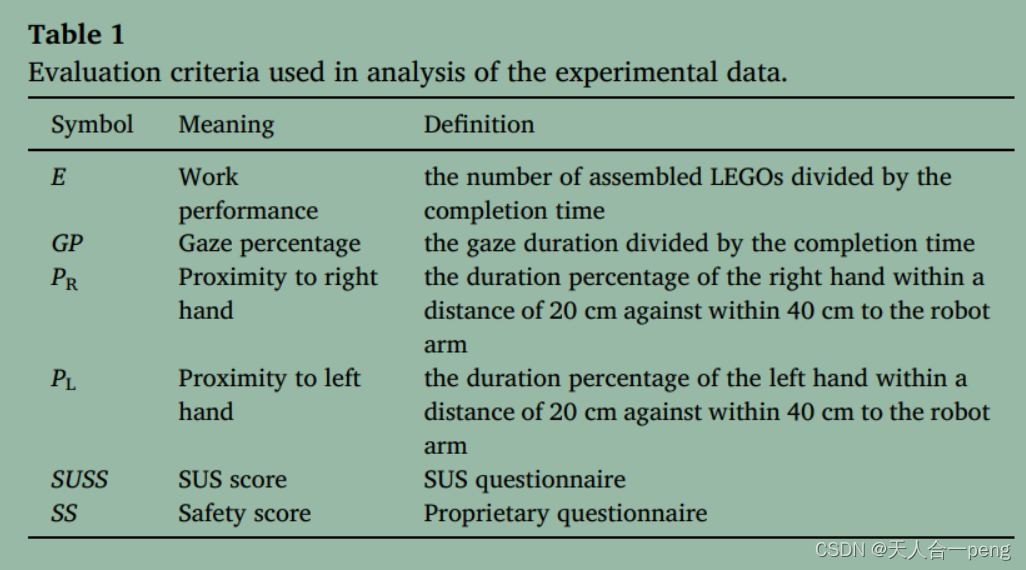[1] Makris S , Karagiannis P , Koukas S ,et al.Augmented reality system for operator support in human–robot collaborative assembly[J].CIRP Annals - Manufacturing Technology, 2016:S0007850616300385.DOI:10.1016/j.cirp.2016.04.038.
————————————————
User behavior
The proximity in Table 1 is defined as the duration percentage of a
hand within a distance of 20 cm to the robot arm against within 40 cm.
It is the duration percentage between a hand within the range of
0–20 cm to the robot arm to 0–40 cm. The idea behind this definition is
that participants might decide to continue the ongoing task while the
robot is approaching (within 40 cm) as long as they are aware of this
situation. They eventually would stop the task and move their hands out
of the workspace to avoid collisions with the robot when it is at a close
proximity (within 20 cm). If the proposed AR user interfaces are effective, the participants are more willing to keep their hands within the
range of 20–40 cm. In this condition, the duration percentage can be an
assessment metric for the effectiveness of the user interface design.
It is useful to understand the participants’ behavior when the robot is
in close proximity. This knowledge may help evaluate whether or not a
user interface improves human trust on robot during their collaboration.
An effective interface should properly communicate the robot motion
and intent so that a human operator is willing to stay close to the robot in
a shared workspace.
:缓存一致性协议——Cache Coherence Protocols)











模式如何传多个参数,并被shell接收】)



)


